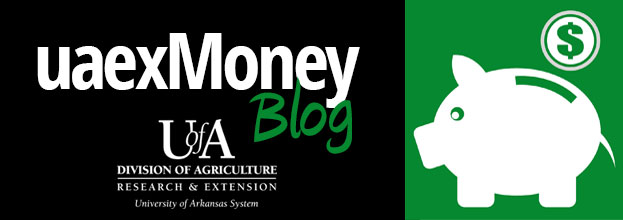UAEX Money Blog

UAEX Money
New Year Financial Check-up
How good is your financial health? It’s a good idea to give yourself a financial check-up at least once a year. Many consumers make New Year’s resolutions about money management. But, do you know if you’re financially stable? Here are three simple ways to benchmark financial well-being.
- Net Worth – total of all assets minus the total of all liabilities. That’s the dollar value of everything you own minus everything you owe or your total debts. For example, if the current market value of your home is $150,000 you would list that in the asset column. Let’s assume you still owe $100,000 on your home mortgage loan. You would list $100,000 in the liabilities column. Net worth should be positive and increasing each year. A form to calculate net worth can be found on my website at www.uaex.uada.edu – type “net worth” into the search box.
- Debt to Income Ratio – monthly debt payments (excluding mortgage) divided by net monthly salary. Debt payments include credit card minimum payments, car payments or other monthly consumer debt. Use your net monthly salary – that’s after taxes and other withholding has been taken out. I like to use the salary figure that’s actually your take-home pay. Sometimes health insurance premiums or retirement contributions are taken directly from the employee’s paycheck. A lower ratio is better than a higher ratio. Less than 10% is best. More than 20% could be a sign of trouble. Use the online calculator at www.powerpay.org to explore repayment plan options.
- Credit Score – Scores usually range from 300-850. The best scores are in the mid-700’s and higher. Your credit report is free but you will have to pay for your credit score. If you’ve shopped for a car or home loan recently, potential lenders may have run a credit check and can give you a copy of your credit score. If you haven’t seen your score in a couple of years, it’s worth checking. Fees are usually less than $15. Companies may try to entice you to sign up for a feebased credit monitoring service. Most consumers don’t need this so be careful to only purchase the credit score. Some consumers may have a lower score because they haven’t used credit. This is often the case for young adults who are just starting their financially independent lives. Some consumers don’t like to use credit and prefer to pay as they go. This is perfectly acceptable. The benefit of a higher credit score is that consumers can save thousands of dollars in interest because they qualify for lower interest loans